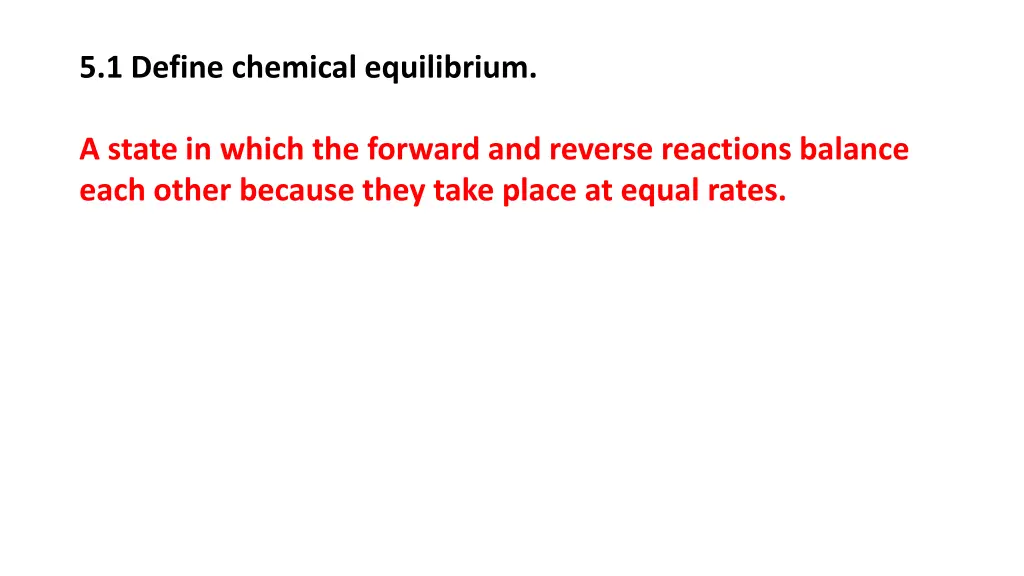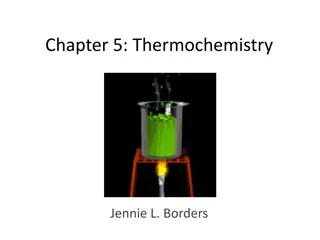
Understanding Chemical Equilibrium and Dynamic Equilibrium
Explore the concept of chemical equilibrium, the significance of the double arrow in reactions, characteristics of reaction mixtures in equilibrium, and more. Learn about homogeneous and heterogeneous equilibria and how to write chemical equilibrium expressions for different systems.
Download Presentation

Please find below an Image/Link to download the presentation.
The content on the website is provided AS IS for your information and personal use only. It may not be sold, licensed, or shared on other websites without obtaining consent from the author. If you encounter any issues during the download, it is possible that the publisher has removed the file from their server.
You are allowed to download the files provided on this website for personal or commercial use, subject to the condition that they are used lawfully. All files are the property of their respective owners.
The content on the website is provided AS IS for your information and personal use only. It may not be sold, licensed, or shared on other websites without obtaining consent from the author.
E N D
Presentation Transcript
5.1 Define chemical equilibrium. A state in which the forward and reverse reactions balance each other because they take place at equal rates.
5.2 Explain the meaning of a double arrow in chemical reactions. It means that a reaction is at equilibrium and that the forward reaction and the reverse reaction are occurring at the same rate
5.3 Describe chemical equilibrium using reactant and product concentration-time graph or particulate diagrams
5.4 Describe dynamic equilibrium A process where reactants continue to form products and products continue to form reactants The concentration of reactants and products are constant , not equal, at constant temperature
5.5 List three characteristics a reaction mixture must have if it is to attain a state of chemical equilibrium To attain equilibrium, 1. The reaction mixture must be in a closed container, 2. Temperature must be constant and 3. All reactants and products must be present
5.6 Explain what equilibrium position is A particular set of equilibrium concentrations
5.7 Compare homogenous and heterogeneous equilibria In a homogenous equilibria, all the reactants and products are in the same physical state In a heterogeneous equilibrium, reactants and products are in different physical states
5.8 Write chemical equilibrium expression for a homogeneous or heterogeneous equilibrium systems (Keq, Kc and Kp) 1) Pure solids do not appear in the equilibrium expression 2) Pure liquids do not appear in the equilibrium expressions 3) Water, as solid or liquid, does not appear in the equilibrium expression 4) When a reactant or product is preceded by a coefficient, its concentration is raised to the power of that coefficient in the Keq expression 5) When the Keq of a reaction has been multiplied by a number, the Keq is raised to the power of that number 6) The Keq of a reaction occurring in the reverse direction is the inverse of the Keq of the reaction occurring in the forward direction (1???) 7) Keq of a net reaction that has two or more steps is found by the product of Keq (ex K = K1 K2 K3 )
5.9 Relate the value of an equilibrium constant to the relative quantities of reactants and products at equilibrium The larger the equilibrium constant the greater the amount of products formed at equilibrium
5.10 Write the relation between Kp and Kc and solve problems involving this relation ? ?? ?= ? ?? ? (? ?? ?) ? ? n = Sum of stoichiometric coefficients of gaseous products Sum of stoichiometric coefficients of gaseous reactants
5.11 Calculate the value of Keq, Kc, or Kp when the concentration or pressure of reactants and products are given at a constant temperature
5.12 Calculate the concentration or pressure of reactants or products using equilibrium constant expression






















